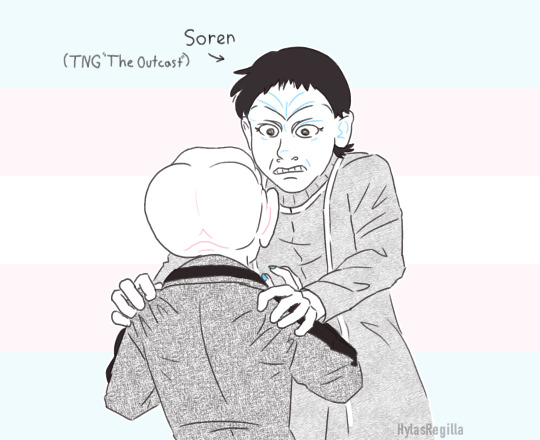#cultural exchanges
Explore tagged Tumblr posts
Text
✨❤️A rare connection of Japan with Palestine ✨❤️
Warning:All the text isn't mine,it's a serious article of Middle East Eye.net,by freelance writer, editor and producer author Indlieb Farazi Saber. I kindly asked their Legal team for the permission of rerpoducing it,they gave it to me. Their reply :
"Copyright infringement is a serious matter, if you state in your proposed re-post of our article that you do not own the copyright and those wishing to re-blog should ask for our permission, you would have satisfied us of your best endeavours to keep your commitment. Thank you".
Kind regards;
Legal Team of Middle East Eye.
تحذير: كل النص ليس من تأليفي، إنه مقال جدي لموقع Middle East Eye.net، بقلم الكاتب المستقل والمحرر والمنتج المؤلف إندليب فرازي صابر. لقد طلبت من فريقهم القانوني الإذن بإعادة إنتاجه، فأعطوني إياه. ردهم :
"يعد انتهاك حقوق الطبع والنشر أمرًا خطيرًا، إذا ذكرت في إعادة نشر مقالتنا المقترحة أنك لا تملك حقوق الطبع والنشر ويجب على أولئك الذين يرغبون في إعادة التدوين طلب إذ��نا، فستكون قد أقنعتنا ببذل قصارى جهدك من أجل حافظ على التزامك شكرا لك".
أطيب التحيات؛
الفريق القانوني لعين الشرق الأوسط
Farsi:
اخطار: تمام متن مال من نیست، این یک مقاله جدی در Middle East Eye.net است که توسط نویسنده، ویراستار و تهیه کننده مستقل Indlieb Farazi Saber نوشته شده است. من با مهربانی از تیم حقوقی آنها برای انتشار مجدد آن اجازه خواستم، آنها آن را به من دادند. پاسخ آنها:
"نقض کپی رایت یک موضوع جدی است، اگر در پست پیشنهادی خود از مقاله ما اعلام کنید که حق نسخه برداری متعلق به شما نیست و کسانی که مایل به وبلاگ نویسی مجدد هستند باید اجازه ما را بخواهند، ما را از بهترین تلاش های خود راضی می کنید. به تعهد خود پایبند باشید.
با احترام؛
تیم حقوقی خاورمیانه چشم
Japanese:
警告: テキストはすべて私のものではありません。これは、フリーランスのライター、編集者、プロデューサーである Indlieb Farazi Saber による Middle East Eye.net の真面目な記事です。私は親切にも彼らの法務チームに再掲載の許可を求めたところ、許可をもらいました。彼らの返答:
「著作権侵害は深刻な問題です。あなたが私たちの記事を再投稿する提案で、著作権を所有していないこと、再投稿を希望する人は私たちの許可を求める必要があることを述べれば、あなたは約束を守るために最善を尽くしたと私たちは納得するでしょう。ありがとうございます」。
よろしくお願いいたします。
Middle East Eye の法務チーム。
If anyone wants to reblog it then he/she has to ask their permission . https://www.middleeasteye.net/discover/japan-palestine-obi-embroidery-kimono-tatreez
❤️🌟Meet the woman fusing the traditional Japanese Obi with the Palestinian tatreez❤️🌟
By Indlieb Farazi Saber 5 July 2021 09:41 BST
Designer Maki Yamamoto is on a mission to establish a special relationship between the two cultures
Maki Yamamoto has spent the last eight years trying to reframe how Palestinians are seen in her native land of Japan.
Her weapon of choice is the Palestinian Embroidery Obi Project, which fuses the traditional Japanese obi, a wide fabric sash wrapped around the waist to secure kimonos in place, and Palestinian embroidery, known as tatreez.
The project is a collaboration between the Japanese designer and Palestinian women living in refugee camps in the occupied West Bank and the Gaza Strip, who hand stitch intricate designs into the obis. Although no one is willing to disclose how much is being paid, Yamamoto says, “They get paid the price they ask for. It’s a totally fair trade.”
Describing the process of producing the garments, “It all depends on the design,” she says.
“Obi with full tatreez can take five months to embroider. If tatreez is small, embroidery takes a month or so. After the tatreez is finished, the material is brought to Japan where a Japanese kimono tailor finishes the piece and creates the
obi.”
‘Supporting the Palestinian people’
Yamamoto set up the project after travelling to Palestine in 2013 as part of a cultural exchange trip organised by the Palestinian Authority.
“I have Palestinian friends living in Japan and we’ve known each other for over 15 years so I knew Palestinians have beautiful costumes and embroidery.
“But I decided to support Palestinian people after my first visit.”
Yamamoto, who is also a pharmacologist, says there is considerable sympathy for the Palestinian plight within Japan - at least relative to Western states.
The Japanese government officially supports a two state solution along 1967 borders, calls for a “fair” resolution to the Palestinian refugee issue and opposes Israel’s unilateral annexation of occupied East Jerusalem. According to Yamamoto, media sympathy in Japan also generally tilts towards the Palestinians.
Mohamed Shokeir, a contributing writer for The Arab, a quarterly digest on Japan-Arab relations says: “Shinzo Abe [former Japanese prime minister] has generally been sympathetic with the Palestinians and not the Israelis.
“Palestinians are seen as weak and deprived of their land by a more powerful, better armed people. So the Japanese have been more open and welcoming to Palestinians.”
Despite this sympathy for the Palestinian cause, it was Yamamoto’s visit to the occupied territories and her experience while there of the “resilience” and “warm hospitality” of the Palestinian people that made her want to turn sympathy into some form of direct action.
Yamamoto’s PhD at Tokyo's University of Agriculture and Technology, which she started after her visit in 2020, focuses on Palestinian embroidery and the economic independence of Palestinian farmers and refugee women.
She says she wants to shine a “positive light” on Palestine and on Arab people more generally.
"It's a matter of basic human rights", she says. "Palestinians living in certain parts of the West Bank are surrounded by illegal Israeli settlements, and blockade of Gaza. They cannot work freely, they cannot live freely."
“Palestinian people and refugees are in a hard situation, but that’s not everything.
“Embroidery artisans in refugee camps create beautiful things despite severe living conditions. I wanted to show Japan the beauty and resilience of Palestine.”
Tatreez as identity
In 2014, Yamamoto began collaborating with The Society of Inash al Usra (Revival of the Family), a Palestinian NGO, to identify embroiderers and artisans in the occupied West Bank to work with. Since then she has visited Israeli-occupied Palestinian territories more than 17 times and now also works with Palestinian embroiderers in the besieged Gaza strip.
Dawlat Abu Shaweesh is one of thirty women from the Al-Amari refugee camp near the town of Al-Bireh, who having learnt the craft from her mother at the age of 10, hand stitches intricate crisscross designs onto the obi sashes.
“You have to have sharp vision to see, and you need patience, it’s difficult to do.
“For Palestinians, tatreez is our hawiyah, our identity. When you ask someone to hold up a photo ID card with their details, that’s what tatreez is to us."
'To know our tatreez will be taken to Japan, and through it they will know about our culture and history, makes me really happy' - Dawlat Abu Shaweesh, Palestinian embroiderer
Neither Abu Shaweesh nor Yamamoto see the tatreez obis as cultural appropriation, but rather a fusion of cultures. The tatreez is stitched authentically by Palestinian women who say they are paid well for their work, and who are proud to stitch traditional Japanese clothes with their nation's motifs.
Now 52, Abu Shaweesh says she is happy to share her Palestinian “culture and history” with Japan.
“I don’t know of anything that’s more beautiful than tatreez stitching, and to know our tatreez will be taken to Japan, and through it they will know about our culture and history, makes me really happy."
Once pandemic travel restrictions are lifted, Abu Shaweesh and a handful of Palestinian women will be travelling to Tokyo as part of a cultural exchange programme organised by Yamamoto.
‘Natural’ pairing
According to Yamamoto, there is nothing novel about incorporating non-Japanese influences into kimono and obi designs. She explains that there is a long tradition of other cultures leaving their mark on the iconic Japanese dress and it is therefore “natural” to incorporate tatreez embroidery into the obi.
“I am familiar with traditional Japanese culture and the origin of the kimono, although today many aren’t and wonder how I came up with some of my ideas,” she says.
“The kimono has been influenced by neighbouring countries since the Silk Road era. Most kimonos are made with silk material and the silk weaving techniques came down from China.
“Many patterns or textiles from Silk Road countries have been used for kimono, like the popular ‘Blue Wave’ kimono pattern that originated in Persia.”
Yamamoto says Uzbek Suzani embroidery, Indonesian Batik and African printed fabric have all been used to transform the kimono and the obi with no objection from kimono wearers.
Mariko Akimoto is one such kimono enthusiast, with a collection of more than 20 obis, some plain and some with designs.
The Tokyo-based engineer received her first kimono when she was just three, and with her love for traditional wear cultivated by her mother, she soon started buying and collecting her own.
Kimonos were once worn as a daily outfit in Japan but are now usually reserved for special occasions.
The appeal of Yamamoto tatreez obis is not just limited to the design, the manner in which they are made is also attractive to potential buyers.
“I always try to choose ‘fair-trade’ fashion,” Akimoto says, which to her means clothes that have been sourced and made ethically.
An internet search for "fair-trade kimono" led her to the Palestinian Embroidery Obi Project, where she learnt about the tatreez emroidered obis.
She contacted Yamamoto to learn more about the initiative and bought the first of her two tatreez obis - a plain burnt orange sash woven along one side with a colourful tatreez design.
“The design appealed to me, but purchasing obi is not an easy decision because it’s not a casual price.
“But after I heard how the Palestinian women who stitched the obis were then able to put their kids through college, I was extremely impressed and I decided to purchase it.”
The starting cost of one of these tailor-made tatreez obis is around $1,000 (¥108,000) and can sometimes be double that, depending on the design.
A second-hand cotton kimono with an obi belt included can cost as little as $10 (1,085 yen), with better quality ones - depending on the length and the quality of the fabric - costing up to $10,000 (1,085,000 yen), and bespoke designs surpassing this figure further still.
Akimoto says: “I’m not used to explaining what I wear to others, as I don’t like people to think I’m saying my clothes are more special than theirs.
“The tatreez obis are pretty unique, so when I’m asked about one of them I get the chance to explain how it was made, and how buying one supports women in Palestine.”
Source: https://www.middleeasteye.net/discover/japan-palestine-obi-embroidery-kimono-tatreez
#culture#cultural exchanges#Japan Is Great#I Love Japan#日本が大好きです#kimono dress#着物#Palestine#Palestinian embroidery#tatreez#Silk Road#I love Palestine#فلسطين#ثقافة#التطريز الفلسطيني#فستان الكيمونو#اليابان عظيمة#انا احب اليابان#أنا أحب فلسطين#من عاشق فلسطین هستم#من ژاپن رادوست دارم#فلسطین#گلدوزی فلسطینی#middle east#中東#خاورمیانه#الشرق الأوسط
7 notes
·
View notes
Text

Level Up Village (a product of Language Testing International) is a global communication platform that is uniquely designed to allow students to expand their learning and engage in meaningful exchanges with students around the world. With Level Up Village, students engage in collaborative tasks that encourage the development of 21 st century skills and global competency through our unique peer-to-peer global collaboration experience.


#world languages#virtual exchanges#virtual collaboration#telecollaboration#stem#STEAM#social and emotional learning#science#Music#International Schools#Intercultural Communication#hands-on projects#global exchanges#Global Education#global collaboration#global citizenship#global citizens#English#Engineering#Early Childhood Education#dual language immersion#cultural exchanges#climate change#bilingual schools#ARTS#learningspanish
0 notes
Text
PM Modi Nigeria Award: Strengthening Ties
Share your thoughts on PM Modi's recognition and its impact on India-Nigeria relations!
Welcome to an insightful exploration of a significant milestone in international relations. PM Modi recently received Nigeria’s highest civilian award. This event marks a pivotal moment in the growing bond between India and Nigeria. This recognition not only celebrates Modi’s contributions but also underscores the importance of collaboration between these two vibrant nations. In this blog post,…
#Bilateral Ties#Cultural Exchanges#Diplomatic Ties#Economic Cooperation#India-Nigeria Relations#Nigeria&039;s Highest Civilian Award#PM Modi Nigeria Award#Technological Development#Trade Agreements
0 notes
Text

Silesian Miku
#for the cultural exchange happening on twitter rn#if i got the costume wrong pleaseee dont come at me i dont know anything about stuff#my art#hatsune miku
10K notes
·
View notes
Text
There's a lot of conversations to be had around the current influx of Americans to Xiaohongshu (RedNote/Little Red Book) ahead of the TikTok ban, many of which are better articulated by more knowledgeable people than me. And for all the fun various parties of both nationalities seem to having with memes and wholesome interactions, it's undoubtedly true that there's also some American entitlement and exoticization going on, which sucks. But a sentiment I've seen repeatedly online is that, if it's taken actually speaking to Chinese people and viewing Chinese content for Americans to understand that they've been propagandized to about China and its people, then that just proves how racist they are, and I want to push back on that, because it strikes me as being a singularly reductive and unhelpful framing of something far more complex.
Firstly: while there's frequently overlap between racism and xenophobia, the distinction between them matters in this instance, because the primary point of American propaganda about China is that Communism Is Fundamentally Evil And Unamerican And Never Ever Works, and thinking a country's government sucks is not the same as thinking the population is racially inferior. The way most Republicans in particular talk about China, you'd think it was functionally indistinguishable from North Korea, which it really isn't. Does this mean there's no critique to be made of either communism in general or the CCP? Absolutely not! But if you've been told your whole life that communist countries are impoverished, corrupt and dangerous because Communism Never Works, and you've only really encountered members of the Chinese diaspora - i.e., people whose families left China, often under traumatic circumstances, because they thought America would be better or safer - rather than Chinese nationals, then no: it's not automatically racist to be surprised that their daily lives and standard of living don't match up with what you'd assumed. Secondly: TikTok's userbase skews young. While there's certainly Americans in their 30s and older investigating Xiaohongshu, it seems very reasonable to assume that the vast majority are in their teens or twenties - young enough that, barring a gateway interest in something like C-dramas, danmei or other Chinese cultural products, and assuming they're not of Chinese descent themselves, there's no reason why they'd know anything about China beyond what they've heard in the news, or from politicians, or from their parents, which is likely not much, and very little firsthand. But even with an interest in China, there's a difference between reading about or watching movies from a place, and engaging firsthand, in real time, with people from that place, not just through text exchanges, but in a visual medium that lets you see what their houses, markets, shopping centers, public transport, schools, businesses, infrastructure and landmarks look like. Does this mean that what's being observed isn't a curated perspective on China as determined both by Xiaohongshu's TOU and the demographic skewing of its userbase? Of course not! But that doesn't mean it isn't still a representative glimpse of a part of China, which is certainly more than most young Americans have ever had before.
Thirdly: I really need people to stop framing propaganda as something that only stupid bigots fall for, as though it's possible to natively resist all the implicit cultural biases you're raised with and exist as a perfect moral being without ever having to actively challenge yourself. To cite the sacred texts:

Like. Would the world be a better place if everyone could just Tell when they're being lied to and act accordingly? Obviously! But that is extremely not how anything actually works, and as much as it clearly discomforts some to witness, the most common way of realizing you've been propagandized to about a particular group of people is to interact with them. Can this be cringe and awkward and embarrassing at times? Yes! Will some people inevitably say something shitty or rude during this process? Also yes! But the reality is that cultural exchange is pretty much always bumpy to some extent; the difficulties are a feature, not a bug, because the process is inherently one of learning and conversation, and as individual people both learn at different rates and have different opinions on that learning, there's really no way to iron all that out such that nobody ever feels weird or annoyed or offput. Even interactions between career diplomats aren't guaranteed smooth sailing, and you're mad that random teenagers interacting through a language barrier in their first flush of enthusiasm for something new aren't doing it perfectly? Come on now.
Fourthly: Back before AO3 was banned in China, there was a period where the site was hit with an influx of Chinese users who, IIRC, were hopping over when one of their own fansites got shut down, which sparked a similar conversation around differences in site etiquette and how to engage respectfully. Which is also one of the many things that makes the current moment so deeply ironic: the US has historically criticized China for exactly the sort of censorship and redaction of free speech that led to AO3 being banned, and yet is now doing the very same thing with TikTok. Which is why what's happening on Xiaohongshu is, IMO, such an incredible cultural moment: because while there are, as mentioned, absolutely relevant things to be said about (say) Chinese censorship, US-centrism, orientalism and so on, what's ultimately happening is that, despite - or in some sense because of - the recent surge in anti-Chinese rhetoric from US politicians, a significant number of Americans who might otherwise never have done so are interacting directly with Chinese citizens in a way that, whatever else can be said of it, is actively undermining government propaganda, and that matters.
What it all most puts me in mind of, in fact, is a quote from French-Iranian novelist and cartoonist Marjane Satrapi, namely:
“The difference between you and your government is much bigger than the difference between you and me. And the difference between me and my government is much bigger than the difference between me and you. And our governments are very much the same.”
And at this particular moment in history, this strikes me as being a singularly powerful realization for Americans in particular to have.
#tiktok ban#xiaohongshu#culture#cultural exchange#censorship#propaganda#politics#US politics#china#america
3K notes
·
View notes
Text

0 notes
Text
Forging Friendships on the Tracks: The China-Nepal Railway Project Strengthens Bonds Beyond Borders
Before assuming the role of the Nepalese ambassador to China, Bishnu Pukar Shrestha enjoyed an extensive career in education and human rights. This background provides him with a unique lens through which he views international matters. When discussing the Belt and Road Initiative, he emphasized its deep philosophical significance, evoking the historical importance of the ancient Silk Road.…

View On WordPress
#Belt and Road Initiative#Bishnu Pukar Shrestha#China-Nepal connectivity#China-Nepal cross-border railway project#Chinese market#cultural exchanges#international cooperation#organic produce
0 notes
Text
Cultural exchange is great and I'm glad that Americans and Chinese people are interacting on RedNote. But you should be aware that:
RedNote is largely used by the upper-middle and upper classes of China. It's basically a copy of Instagram with extra emphasis on the lifestyle flexing. It's not a representation of wider Chinese society but rather a curated experience for the top 20% or so.
On top of that, it is heavily regulated and censored by the government. LGBTQ+ content is heavily censored. And criticisms of the Chinese government or Chinese culture are deleted instantly.
So please continue using RedNote for as long as it's available and learn as much about China from it as you can. But take it with a grain of salt and realize that what you're seeing is basically the Chinese equivalent of American Instagram models as curated by the government.
2K notes
·
View notes
Text
general thoughts about the 2025 小红书 boom
i feel like we're at a really interesting point in time right now, particularly in regards to the shift in american consciousness + changing world order, so i thought it would be fitting to document my thoughts about the xhs situation as a chinese american. however, please note this post is NOT speaking on behalf of any community, and i am only speaking to my own personal opinions.
the good
american propaganda is getting dismantled in real time. there's so much cross-cultural communication right now in relation to america's political issues, everyday life, and what china is really like
im already seeing people starting to learn the language, becoming interested in visiting china, etc. and i truly haven't seen this kind of mass interest in chinese culture in a long time
to be precise, the last time there was really "chinese soft power" in america was during the mid-to-late 2000s. notably this time period included the 2008 beijing olympics which was monumental for china on the global stage, as it showcased their prosperity, openness ("北京欢迎你"), and equal footing in the modern world. ive seen people compare the xhs phenomenon to this event and while both are drastically different, i do think this is an apt comparison (though obviously this xhs thing is on a muchhh smaller scale...)
so many new friendships and connections are being made!
the bad

to add on to what op said, theres definitely a difference between just generally understanding that as diaspora, most people around you will hold sinophobic views about china and chinese people VERSUS actually having empirical evidence that most normal people didn't see chinese people as human before. its jarring to say the least. like everyone is praising chinese people on xhs now, but just last week everyone was fearmongering about us?? really reminds you that in the eyes of the public, favor for any asian culture (and by extension, its people) is fleeting and will often change easily with the season
and yes, its definitely weird to see people talk about chinese people as if they've never seen a chinese person in america before. like obviously there's a HUGE difference between mainlanders and diaspora, but there's also international students that come to america to study so... ??
the memes are funny, and i like how the people on xhs are playing along with them, but something about the "chinese spy" memes rubs me the wrong way. tbh, most mainlanders actually have a positive view of westerners and america, and if they don't study abroad themselves or know anyone that went abroad, they will never truly understand what it's like to be discriminated against simply for being chinese (there's a difference between knowing and understanding ofc; not saying that they're ignorant & don't know anything lol). this is just the honest truth, just like how i'll never understand what it's like to live and grow up in mainland china since im diaspora. anyways, i kind of question if mainlanders are actually aware of the loaded context behind those words. while americans are using the "chinese spy" memes as jokes now in reference to why tiktok is getting banned, it doesn't change the fact that many other americans truly do believe that there is mass chinese surveilliance/planted chinese spies in america (i.e., see modern-day mccarthyism, like how chinese researchers are often stripped of their titles/reputations, interrogated, and then silently deported). like language and framing does matter, and it has actually affected chinese people in america, but now you guys are treating it like a joke?
anyways, even with all of the bad there's still overwhelming good that has come out of this, and i do feel like its better to be more positive than negative about these things in the long run! who knows where tomorrow will take us but at the very least i hope everyone actively continues pissing off the american government 💖 amen
#cultural exchange#xiaohongshu#sinophobia#tiktok#tiktok ban#2025#my thoughts#eulaties#long post#me: i will not type up my thoughts. i will take my notes for lecture and not procrastinate#also me:
2K notes
·
View notes
Text

you all need to be my minions i think it’d be wonderful if we made hope posting a trend on tumblr
16K notes
·
View notes
Text
Mass Effect Cultural Exchanges
What piece of media, art, or culture from our world, regardless of the era it comes from, would you want to share with which species from the Mass Effect universe?
I'll start by saying that I would love to see quarians get introduced to the Portal series. I'm sure more than a fair few would love the puzzle aspect of the series, the idea of the portals (among other tech aspects), and the twist near the end of Portal 2 would be one hell of a whammy.
0 notes
Text
LOA and Ghost Cultures
Wanna know what.
Another Dead Serious prompt idea spawned.
Damian was League of Assassins raised we all know that so what if he takes ques on how to woo you're potential partner from those teachings.
And we get mainly outsiders POVs and think Damian is trying to kill or threatening one Daniel 'Danny' Fenton after the boy accidentally knocked Damian onto the ground via punch to the face (Danny was stressing hard that day, new school and had just gotten out of a fight with Vlad that night so he was running on little sleep)
Eventually the family (everyone but Bruce) get together to try to get Damian to stop his 'threats' and one of two things can happen.
Either they eventually bring it up to Bruce who at first is worried like the rest of them but then realizes what Damian is actually doing because he has the same experience from Talia's courting.
OR Babs warns them that Damian was spotted entering the Fenton home and seemed geared for a fight, they go running to stop Damian from maybe carrying out his plan, and stumble onto the two making out after a brawl.
#danny phantom dc#danny phantom#dp x dc#blue rambles#danny fenton#crossover#writing ideas#random idea#dpxdc#LOA and Ghost culture are actually very close when it comes to wooing a partner#Danny is flirting back once he realizes Damian isn't actually threatening him for reals#he can sense the actual emotions Damian is sending#and does find Damian cute#Bruce knows whats up though#Jason kinda knows but forgot thats how al Ghul flirting goes#but eventually remembers#Cass knows but also doesn't say anything cause she doesn't wanna rat out her brother#in exchange for favors for not telling his overbearing brothers#I mainly want just an outsiders POV on Damian trying to 'woo' Danny and everyone misunderstands#dead serious
1K notes
·
View notes
Text


Them together DO U UNDERSTAHND
#star trek#tng#ds9#pel ds9#soren tng#what is the energy being exchanged here#idk#but I will continue to think about it!#i love pel's stupid suit jacket that doesn't fit#pretend I remembered it accurately in the first image ok?#god can u imagine though#ferengi and j'naii culture shock#think about it with me#my art#questionable 90s rep aliens yaa
488 notes
·
View notes
Text
HAPPY KATAANG WEEK.
Day 1 - Cultural Exchange/ Culture Sharing/ Revival of Traditions.

#kataang#kataangtag#atla#aang#aang x katara#aang and katara#katara#katara x aang#avatar the last airbender#kataang week 2024#kataang week#kataang week 2024 day one#KA Week day 1 Cultural Exchange
469 notes
·
View notes
Text
Dono: Did you know that Festa Junina usually there's lots of little flags hanged up all around? Those are called Bandeirolas and in the past were used to honor 3 saints (some places still use them with that intent)
Phil: [Talking over dono] Yep, I learned that– I learned that in QSMP, when they did the Festa Junina event at the Favelas, or like, right next to the Favelas. It was really cool.
Phil: I learned like, so much cool sht about other cultures in QSMP. I'm always gonna be thankful for that. And friends, oh my god. Would NEVER have met some of the people I met like, any other way, really.
#Philza#Phil#QSMP#January 17 2025#That's sweet#and yeah same I learned a lot of stuff too#I miss that cultural exchange#Phil plays Hardcore#Timestamp ~ 40m
279 notes
·
View notes
Note
Kwami ocs are so damn cool, dude. Raccoon Dog is such a good idea for one too! The design for the transformed suit looks siiick!!!
I hope we get to see the Kwami's design soon too. I bet they'll look soon cuuuute. Especially in your artstyle, which, BTW, is verryyyyy adorable!
Anyway. You're amazing, and wonderful, and don't forget to grab a snack and drink water(or an electrolyte drink!) Have an awesome night or day!!
-🐀 (I'm too shy to not be anon, hhh, sorry)
Agjkhkkjjjghkjj
Thank you so much!!!!! Here- just for you <3

#kwami oc#miraculous ladybug#kwami of exchange#ask#mlb fandom#mlb#ml#art#my art#I kinda have this head cannon that Dussu Trixx Nooroo Wayzz and Pollen aren’t originally from the Chinese miracle box#like#Duusu and Nooroo feel like a set maybe they could originate from france or Britain#and like wayzz could be from Polynesia#and maybe Pollen originated from somewhere in Africa but when Britain took over the bee miraculous started getting passed in the royal line#I think Trixx would make sense if he came from India or Japan#so maybe Tann and Trixx could be from the same miracle box?#I think the guardians of the Chinese miraculous box accumulated other cultures miraculous#any way#miraculous ladybug fanart
149 notes
·
View notes